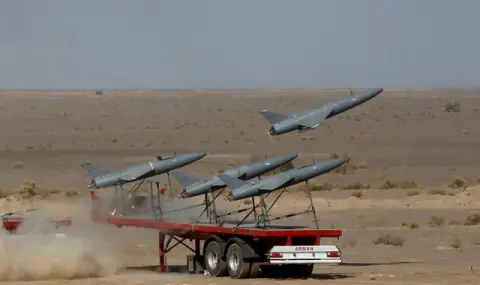The independent monitoring group "Belarusian Gayun" claims that Russian drone "Shahed-136" fell and exploded on the territory of Belarus, 120 km from the border with Ukraine. So far, however, there is no confirmation of this information, especially visually, from other sources, the BBC reports.
According to the independent Belarusian group, this is the fourth time in recent years that Russian attack drones have fallen into the sky over Belarus from Ukraine.
No official Minsk or Moscow commented on these reports, but surveillance channels showed Belarus raising warplanes against them.
One of the first hypotheses was that the Russians deliberately started sending Shaheds to the regions of Belarus bordering Ukraine to temporarily remove them from the threat of Ukrainian air defenses and electronic warfare (and, possibly, to pass intelligence information without intervention), and then return back to Ukraine.
This logic, for example, corresponds to two cases of transit flights of martyrs - when they flew into Belarus from Ukraine and soon returned to Ukrainian airspace.
At the same time, the Russians could alert the Belarusian Air Force and Air Defense Forces about possible routes. That is why, for example, before the first transit entry of "Shaheed" on July 11, in the sky of Belarus, according to "Belarusian Gayun", an attack helicopter Mi-24 and a fighter of the Air Force of Belarus had already flown.
Another version is the influence of the new Ukrainian radio-electronic warfare systems on the Shaheds.
"We can assume that the Ukrainian armed forces have recently acquired some advanced electronic warfare systems. This would allow the Ukrainians to knock some of the Shaheds off course and protect their cities and other sites from attack." However, Ukrainian experts do not support this version.
Some observers have mentioned possible problems with the technical quality of the Russian drones, which could be due to the constant modifications of the shaheeds. Ukrainian engineers are discovering more and more new modifications of the original version of Iranian drones. However, these modifications may also cause problems.
